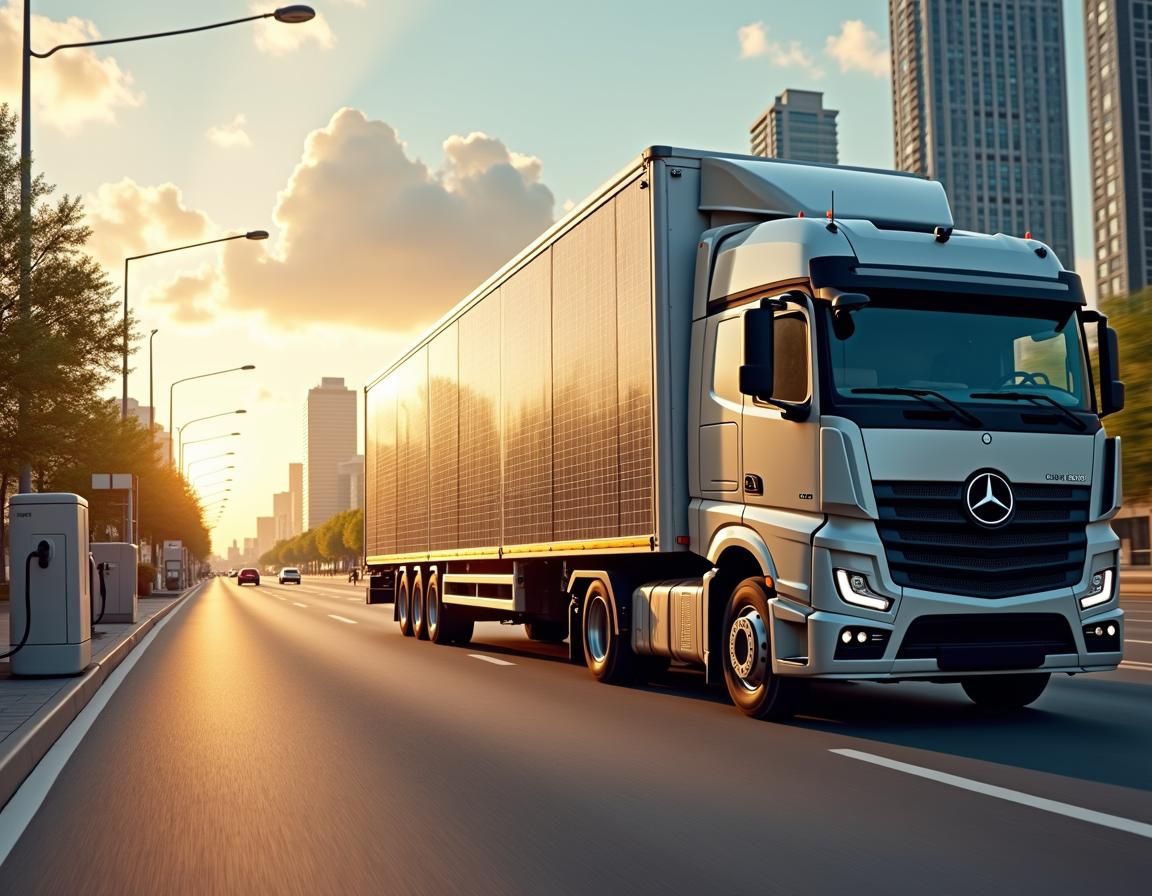The Shift to Electric: How the Transport Industry is Changing the Energy Landscape
The Shift to Electric: How the Transport Industry is Changing the Energy Landscape
The transport industry is a vital part of the US economy, accounting for a significant portion of the country’s energy consumption. However, with the growing concern about climate change and the need to reduce carbon emissions, the industry is undergoing a significant transformation. One of the key drivers of this change is the increasing adoption of electric vehicles (EVs).
As the demand for EVs continues to grow, the transport industry is shifting towards a more sustainable and electrified future. This shift has far-reaching implications for energy consumption, grid infrastructure, and the environment.
With the US transport industry poised for a significant transformation, it’s time to explore the opportunities and challenges that come with electrifying the sector.
The Rise of Electric Vehicles
The rise of electric vehicles (EVs) is gaining momentum in the US. According to recent data, EV sales have increased by 20% in the past year, with many experts predicting that EVs will account for 30% of new car sales by 2030. However, despite this growth, EV adoption in the US remains limited by several challenges and limitations.
One of the main obstacles is the lack of infrastructure, with many areas lacking access to charging stations. Additionally, the high upfront cost of EVs, which can range from $30,000 to $100,000, makes them less affordable for many consumers. Furthermore, the limited range of most EVs, typically between 200-300 miles, makes them less practical for long road trips. These challenges and limitations have led to a slow pace of adoption, with only 1% of US vehicles currently being electric.
While the adoption of renewable energies may not directly impact a business’s operations in the near future, taking simple actions to reduce energy consumption and invest in clean energy can have a ripple effect that benefits the business in the long run. By starting to incorporate renewable energies into their daily operations, individuals and businesses can:
- Develop a culture of sustainability: By making small changes to their energy consumption and investing in clean energy, businesses can foster a culture of sustainability within their organization. This can lead to a more environmentally conscious workforce that is better equipped to implement larger-scale sustainability initiatives in the future.
- Build relationships with renewable energy providers: By investing in renewable energy sources, businesses can build relationships with providers that can help them navigate the process of implementing larger-scale sustainability initiatives. This can lead to better pricing, more efficient implementation, and a smoother transition to a clean energy future.
- Gather data and insights: By tracking energy consumption and production, businesses can gather valuable data and insights that can inform larger-scale sustainability initiatives. This data can help identify areas of inefficiency, prioritize investments, and optimize energy consumption.
- Develop the necessary expertise and infrastructure: By starting to implement small-scale renewable energy initiatives, businesses can develop the necessary expertise and infrastructure to support larger-scale initiatives. This can include training employees on energy management, investing in energy-efficient equipment, and developing policies and procedures to support sustainability.
By taking these small steps, businesses can lay the groundwork for a more sustainable future and make it easier to implement larger-scale sustainability initiatives in the near future. This can include investing in electric vehicles, installing solar panels on their rooftops, or implementing energy-efficient lighting and HVAC systems.
The Role of Industry and Government
The transition to electric vehicles (EVs) is indeed a monumental shift, and it's one that deeply resonates with the challenges and opportunities we face today. As business leaders, decision-makers, and industry influencers, we understand the importance of collaboration between industry giants and government policies in driving this change.
It's truly inspiring to witness how companies like Tesla and Ford are not just pushing the envelope with cutting-edge EV technology but also committing to sustainable practices that significantly reduce emissions across their supply chains. Their leadership sets a powerful example for all of us in the business community.
Equally important are government initiatives such as tax incentives for EV purchases and stringent emissions regulations. These policies create an environment conducive to widespread adoption of EVs. Take California's ambitious goal of having all new cars sold in the state be zero-emission vehicles by 2035—this is a prime example of policy driving significant shifts in consumer behavior and industry standards.
However, our journey doesn't end there. To fully support this movement towards cleaner transportation solutions, substantial investment in grid infrastructure and renewable energy sources is imperative. We need our electricity grids to handle increased demand from EV charging stations while transitioning towards solar, wind, and other renewable energies that can power these vehicles sustainably.
By fostering strong partnerships between governments and industry players like ourselves, we can pave the way for cleaner transportation solutions that benefit everyone while tackling climate change head-on. Let's lead by example, embrace this growth mindset, and work together towards a sustainable future where innovation meets responsibility.
The Future of Energy Consumption in the Transport Industry
The future of energy consumption in the transport industry is on the brink of a transformative shift, driven by our collective need for sustainability and innovation. We've all seen how the growing demand for cleaner energy sources presents a unique opportunity for the transport sector to lead this crucial transition. With advancements in electric vehicles, hydrogen fuel technology, and renewable energy integration, we can look forward to a significant reduction in carbon emissions and improved air quality.
This shift not only aligns with global climate goals but also promises economic benefits through job creation in new energy sectors and infrastructure development. Imagine the potential: by adopting sustainable practices and technologies, the transport industry can become a beacon of change that inspires other sectors to follow suit.
As business leaders and decision-makers, it's essential to recognize that embracing this evolution towards greener energy consumption paves the way for a healthier planet. Moreover, it fosters a more resilient economy that prioritizes both environmental stewardship and innovation. Let's lead by example—our actions today will shape a better tomorrow for everyone involved.
Final Thoughts
As the transport industry undergoes a significant transformation towards electrification, it’s essential to consider the implications of this shift on various aspects of the industry. According to the McKinsey Global Energy Perspective 2024, the increasing adoption of electric vehicles (EVs) is expected to lead to a significant reduction in carbon emissions and improved air quality.
Managing the Complexities of Electric Vehicle Adoption
The shift to electric in the transport industry is not without its challenges. As EVs become more prevalent, the grid will need to
handle increased electricity demand, which could put additional pressure on the grid infrastructure. Moreover, the production and disposal of EV batteries will require careful management to minimize their environmental impact.
Opportunities for the Transport Industry
Despite these challenges, the shift to electric presents numerous opportunities for the transport industry. For instance, the increased demand for electricity could lead to the development of new business models and revenue streams, such as vehicle-to-grid (V2G) technology. Additionally, the reduction in carbon emissions and improved air quality could lead to increased public acceptance and adoption of EVs.
Key Considerations for a Successful Transition
To successfully navigate the transition to electric, the transport industry will need to consider the following key factors:
- Grid infrastructure: The increased demand for electricity will require significant investment in grid infrastructure, including upgrades to transmission and distribution networks.
- Battery production and disposal: The production and disposal of EV batteries will require careful management to minimize their environmental impact.
- Public acceptance and adoption: The transport industry will need to educate the public about the benefits of EVs and address concerns around range anxiety and charging infrastructure.
- New business models and revenue streams: The industry will need to explore new business models and revenue streams, such as V2G technology, to capitalize on the opportunities presented by the shift to electric.
By considering these key factors and opportunities, the transport industry can successfully navigate the transition to electric and reap the benefits of a more sustainable and efficient transportation system.
What is driving the shift to electric vehicles (EVs) in the transport industry?
 LEARN MORE
LEARN MOREThe shift to electric vehicles is primarily driven by the need to reduce carbon emissions, government regulations promoting clean energy, advancements in battery technology, and the growing availability of EV charging infrastructure.
How do electric vehicles compare to traditional gasoline-powered vehicles in terms of efficiency?
 READ MORE
READ MOREElectric vehicles are generally more energy-efficient than gasoline-powered vehicles. They convert over 77% of the electrical energy from the grid to power the wheels, while traditional vehicles only convert about 20-30% of the energy from gasoline into motion.
What are the environmental benefits of transitioning to electric transportation?
 GET STARTED
GET STARTEDSwitching to electric vehicles reduces greenhouse gas emissions, lowers air pollution, and contributes to improved public health. EVs also help decrease the demand for fossil fuels, supporting a more sustainable energy future.
What challenges does the transport industry face in adopting electric vehicles?
 Button
ButtonSome of the main challenges include the high upfront cost of EVs, limited charging infrastructure in certain areas, the range anxiety associated with long-distance travel, and the time it takes to charge a vehicle compared to refueling a traditional car.
How is the global energy landscape expected to change with the rise of electric vehicles?
 Button
ButtonAs electric vehicles become more prevalent, the global energy demand is expected to shift towards renewable energy sources like solar and wind. This will require investments in energy storage technologies and grid modernization to support the growing demand for electricity.
Related Articles
Movers Blog
Book a Service Today
We will get back to you as soon as possible
Please try again later




